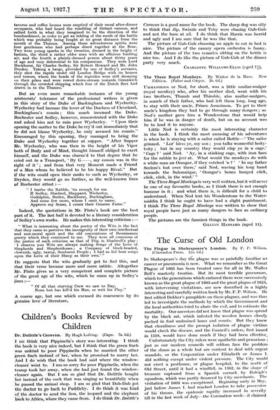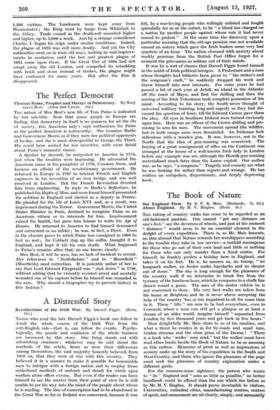The Curse of Old London The Plague in Shakespeare's London.
By F. P. Wilson.
(Clarendon Press. 12s. Cd.) •
IN Shakespeare's day the plague was as painfully familiar as cancer or pneumonia is now. What we remember as the Great Plague of 1665 has been treated once for all in Mr. Walter Bell's masterly treatise. But its most terrible precursors, which to the generations which endured them were successively known as the great plague of 1603 and the great plague of 1625, with intervening visitations, are now described in a highly interesting and carefully written book by Mr. F. P. Wilson. lie first edited Dekker's pamphlets on these plagues, and was thus led to investigate the methods by which the Government and the local authorities tried to abate the evil, and to estimate the Mortality. Our ancestors did not know that plague was spread by the black rat, which infested the wooden houses closely packed in foul undrained lanes and courts. But they knew that cleanliness and the prompt isolation of plague victims would check the disease, and the Council's orders, first issued in 1518, would have done much if they had been 'effective.
Unfortunately the City rulers were apathetic and penurious ; just as our modern councils will Seldom face the problem of the slums as a whole but are content to deal with .urgent scandals, so the Corporation under Elizabeth or James I. did nothing except -under violent pressure. The City would not erect a pesthouse, or plague hospital, to the north of Old Street, until it had a windfall, in 1592,1n the, shape of treasure captured from a Spanish carrack by Raleigh's squadron, which was partly financed by City merchants. The visitation of 1603 was exceptional. Beginning early in May, just before James I. had reached London to take possession of MS . throne, . the epidemic rapidly increased in severity till in the last week of July—the Coronation week—it elaiMed
1,396 victims. The Londoners were kept away from Westminster ; the King went by barge from Whitehall to the Abbey. Trade ceased as the death-roll mounted higher and higher, up to 3,000 a week. And by a strange coincidence Charles I. began his reign under similar conditions. Indeed, the plague of 1625 was still more deadly. And yet the City authorities went on in their old ways, making no real improve- ments in sanitation until the last and greatest plague of 1665 came upon them. If the Great Fire of 1666 had not swept away the old London, and compelled its rebuilding with brick and stone instead of timber, the plague might have continued for many years. But after the Fire it disappeared.































 Previous page
Previous page